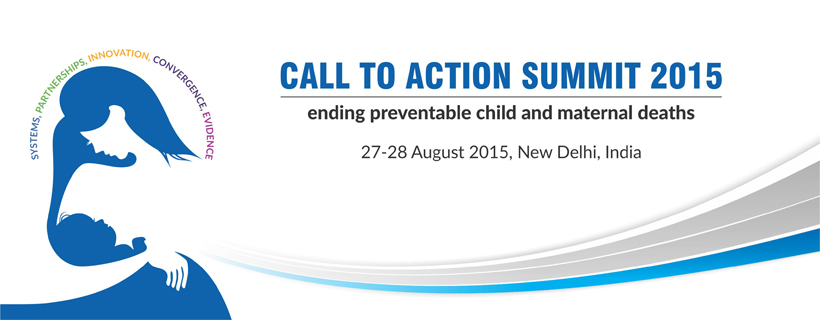27 August 2015
UNIC/PRESS RELEASE/145-2015
Call to Action Summit 2015
Following are UN Secretary-General’s Envoy on Youth Mr. Ahmad Alhendawi’s statement on Women, Children & Adolescent Health, at the Call to Action Summit at Taj Palace, New Delhi on 27 August 2015:
It gives me a great pleasure to be here today and allow me at the outset to thank the Government of India for hosting this timely and much needed Call to Action.
In September 2010, UN Secretary-General launched the Global Strategy for Women’s and Children’s Health. Today we can say that the Global Strategy has contributed to significant progress worldwide for women’s and children’s survival and health.
The Every Woman Every Child movement that grew out of the Global Strategy mobilized actors from all sectors to work towards the shared goals. The United Nations is proud to be supporting this movement.
And today 5 years later, our world has been changing at an unprecedented pace. Technological advancements, shifting perceptions and volatile environment require new, enhanced and effective response mechanisms.
Therefore updating the Global Strategy for Women’s, Children’s and the new Adolescents’ Health is building on new evidence. It includes the need to focus on critical population groups such as newborns, adolescents and those living in fragile and conflict settings.
I welcome the new focus on adolescents in the strategy.
As you know, adolescents face complex challenges such as lack of universal access to health care, information, goods and services, including sexual and reproductive health.
Too few have access to information and counseling to integrated, youth-friendly services. Access to sexual and reproductive health information and services is especially limited and those who are not married may face discrimination in access.
Globally, millions of adolescents die or become sick from preventable causes. According to World Health Organization, 1.2 million adolescents lost their lives in 2012.
The situation is even worse when it comes to adolescent girls. Every 10 minutes, somewhere in the world, an adolescent girl dies as a result of violence. 8 out of 10 adolescent girls who died as a result of violence were between the ages of 15-19.
Further, some 700 million adolescent girls were married as children. Many of these marriages are forced. Early marriage translates into adolescent pregnancy and into risk of dying in childbirth and to drop out of school and many more opportunities lost for thriving and transforming their lives.
5 million young people worldwide are estimated to be living with HIV today. And HIV infection is increasing among adolescents, the only group of the population with such increases. It is now estimated to be the second cause of death among adolescents globally: leading among are African adolescents.
For all these pressing reasons and others, and building on the success of the global movement generated from the Every Women, Every Child, it is a moral responsibility and a strategic action to include adolescents as a new focus of the this global movement.
The UN’s vision is to end all preventable child and adolescent deaths by 2030 and ensure their well-being.
In many settings, adolescent girls and boys face numerous policy, social and legal barriers. Among adolescents living with disabilities or in humanitarian contexts, the barriers are even greater.
The Global Strategy makes recommendations on how countries can overcome such barriers.
We need critical investments in our adolescents to achieve the future we want and the future they deserve.
In conclusion, allow me to make three calls to action to the representatives of governments who are present here:
1) Let’s commit to support adolescent health within the Global Strategy, since this area is new, it will require additional attention and more support,
2) In committing on adolescent health and when designing adolescent focused interventions, let’s always consult, engage and partner with young people. Partnering with adolescents and youth is the key for the successful expansion of Every Women, Every Child.
3) And last but not least, let us scale up the investments in integrated health and development programmes for adolescents through cross-sectoral partnerships.
Our call to action, ladies and gentleman, should not be a missed call. Let’s act today in making unleashing the power of this massive generation of children, adolescents and youth.
I thank you very much.
For Source click here.


